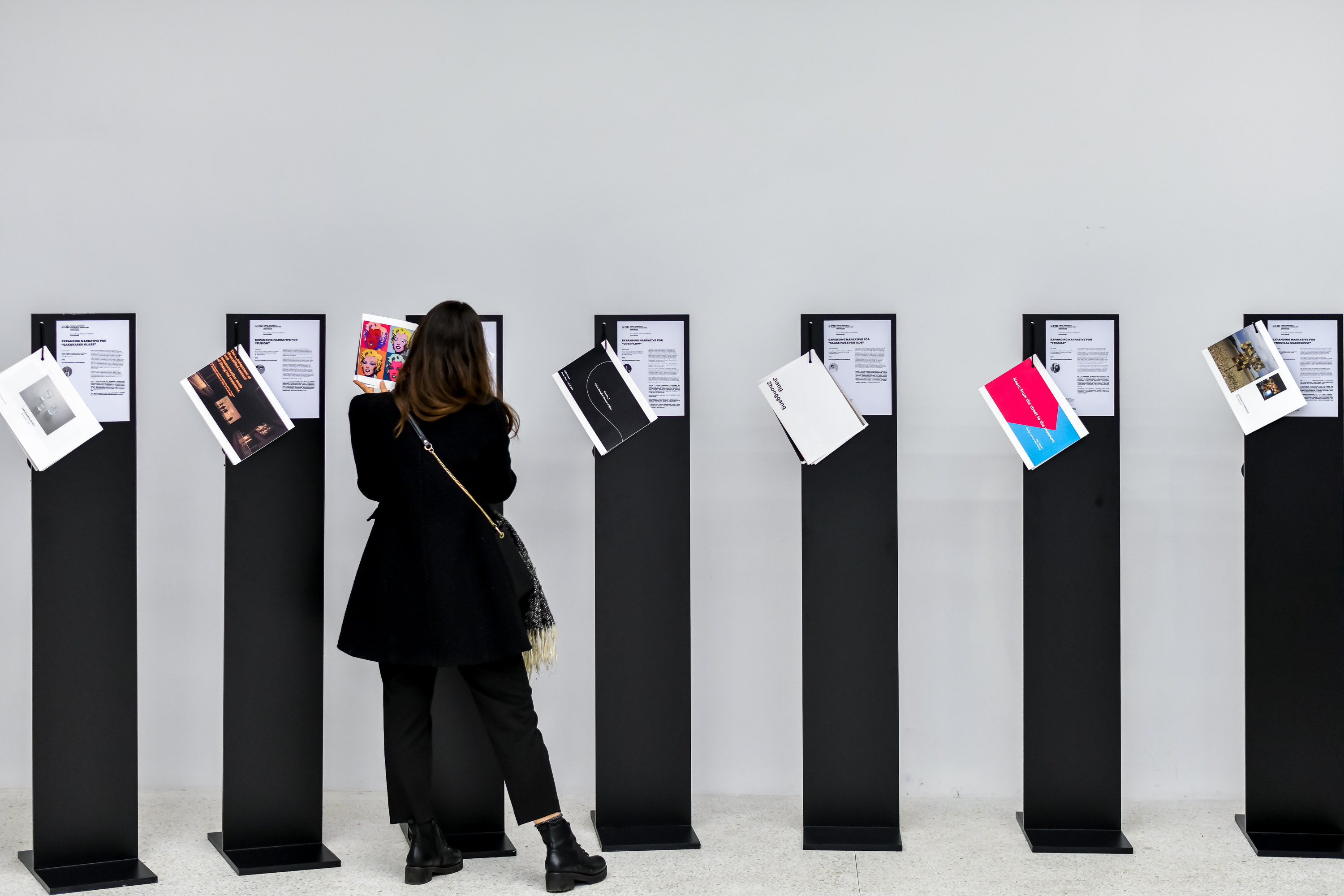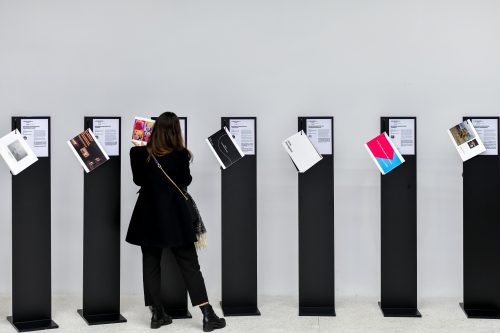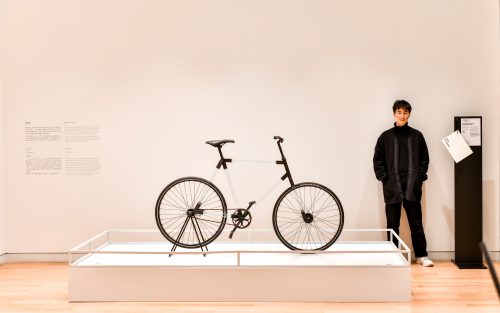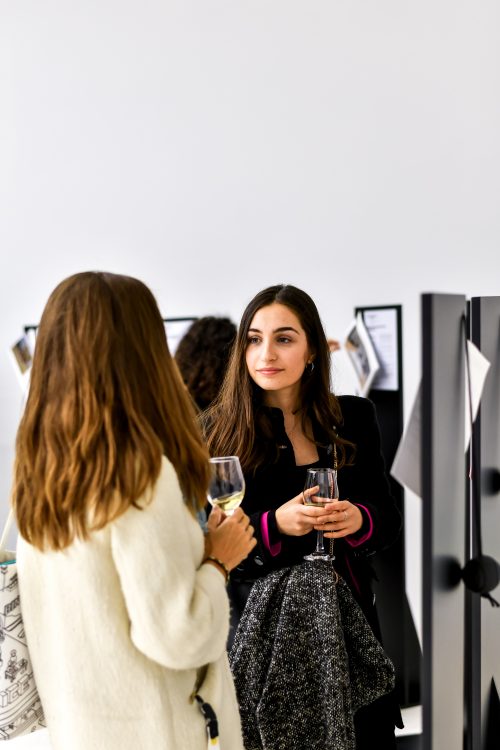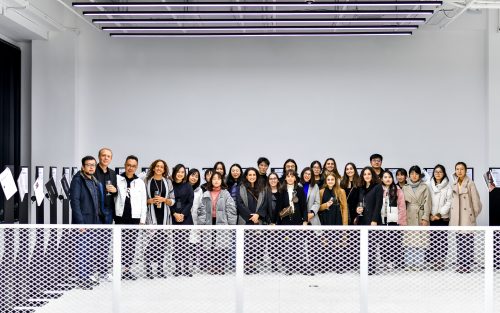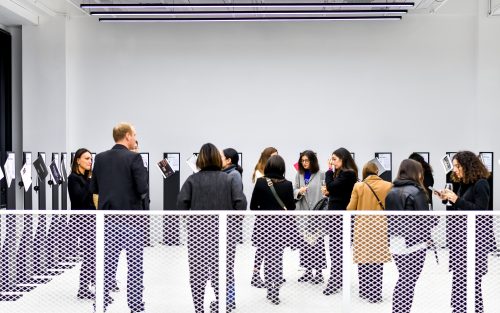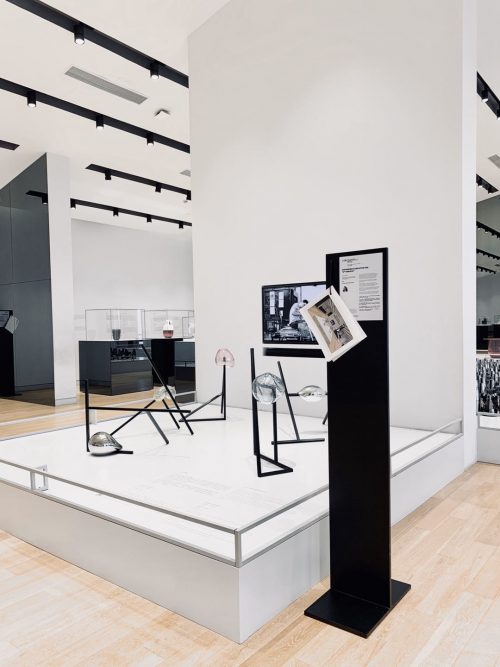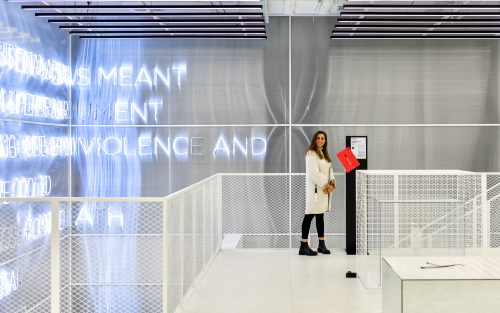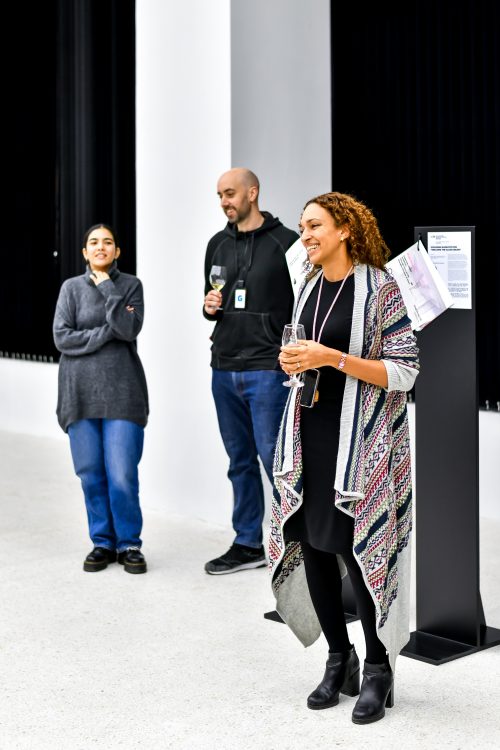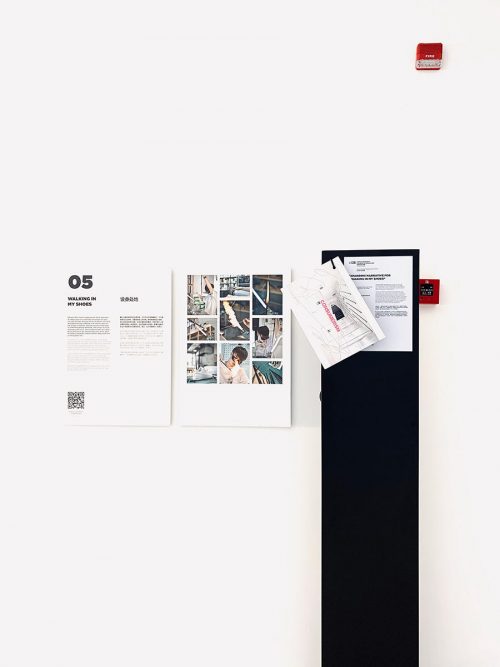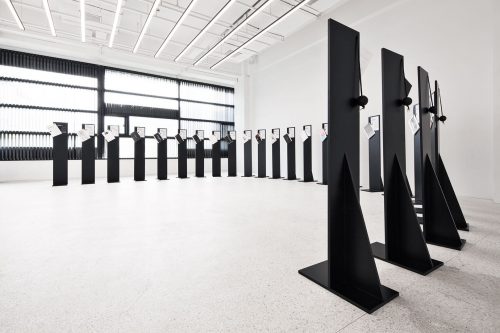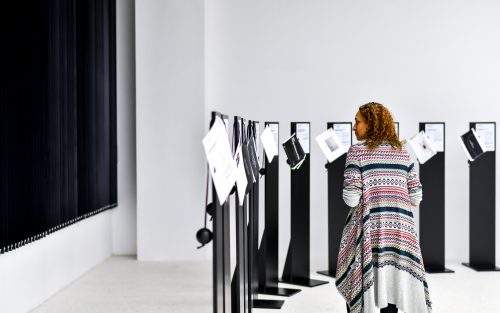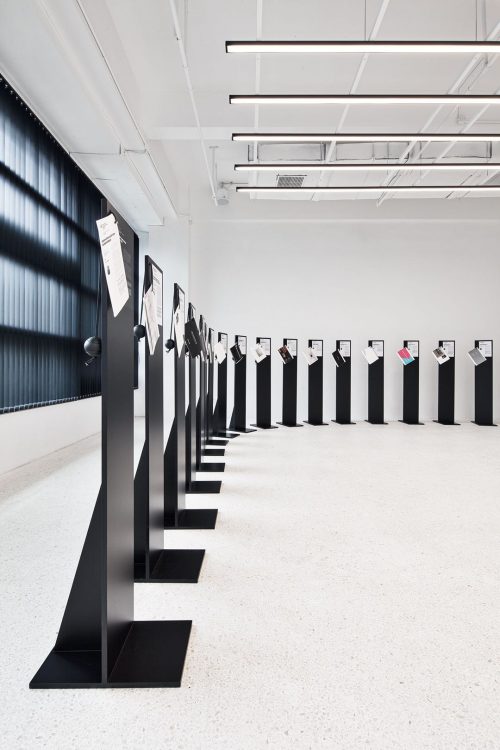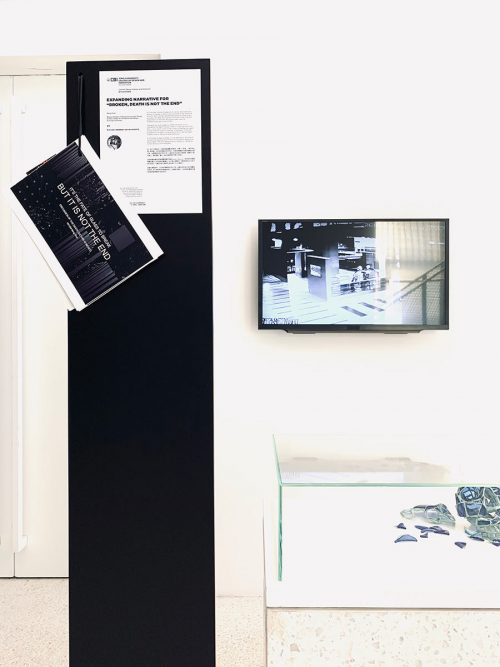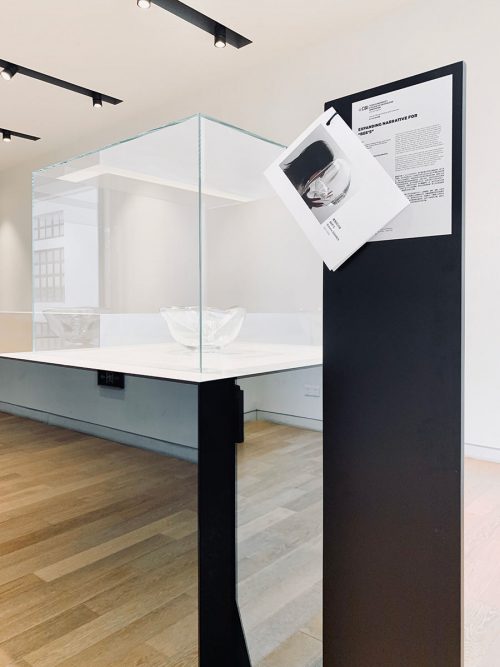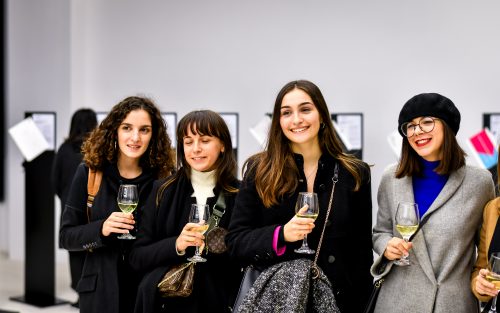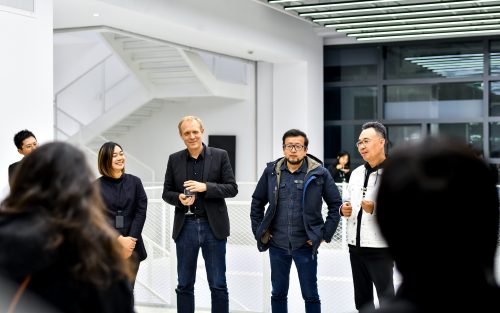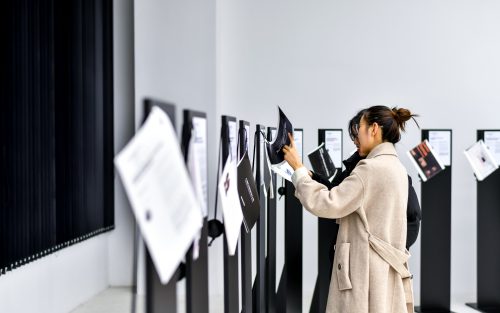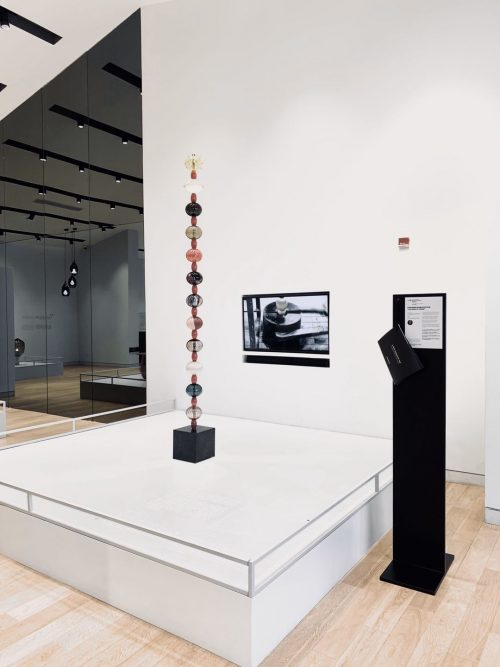上海玻璃博物馆携手同济大学
讲述《扩展叙事》
2019年12月18日
《扩展叙事》是同济大学设计创意学院设计历史与批评课程学生们的作业,该课程由陈伯康(Aric Chen)教授及潘爱心(Azinta Plantenga)助理研究员指导。上海玻璃博物馆设计总监迪尔曼•图蒙(Tilman Thürmer)以及策展人陈怡君受邀评论学生们的发表报告。
2019年12月5日,该合作项目在上海玻璃博物馆向社会公开。学生们被要求在上海玻璃博物馆导览参观后,选择一件展品,并介绍两件博物馆外的物品以支持他们各自的新叙事。 在设计总监和策展人致辞后,学生们一同将各自的展板搬运至博物馆展厅内。这项令馆校双方都深受启发的作业成果展示于学生所选择的展品旁边。观众们也可以看到另一种别样诠释作品的角度。通过这样的练习,学生不仅储备了设计历史和理论的入门知识,也能锻炼将设计置于更广泛社会历史和当代现象中的批判性思维。
透过这次成功的合作,学生们根据玻璃展开的新颖思考为博物馆添增了叙事层次。《扩展叙事》不仅建立设计历史学生对物品与历史多种解释方式的认识,并促使博物馆观众思索他们各自之于展品的别样理解。该项目成果将在上海玻璃博物馆展出至2020年3月。
SHMOG X D&I:
Expanding Narratives
December 18, 2019
“Expanding Narratives” stems from an assignment undertaken by students in the Design History and Criticism course taught at Tongji University’s College of Design and Innovation by Prof. Aric Chen and Assistant Researcher Azinta Plantenga. The Design Director of Shanghai Museum of Glass Tilman Thürmer and curator Yichun Chen were invited to critique the students’ presentation.
On December 5, 2019, the outcome of the cooperative project was announced in the Museum. The students were each asked to choose one object on display at the Shanghai Museum of Glass, and place it within a different context by introducing two other objects from outside the museum in order to support their new narrative. After the address by Design Director and curator, students brought their presentation boards to the museum gallery. The results of this assignment, as both parties found inspiring, are presented next to the exhibits and the visitors could see an alternate interpretation. Through exercises such as this, students are equipped with an introductory knowledge of design history and theory as well as the critical thinking skills necessary to develop narratives, rethink narratives and situate design within broader socio–historical and contemporary phenomena.
Through this successful collaboration, the students’ fresh and critical thinking inspired by glass add another layer to the storytelling at the museum. “Expanding Narratives” not only builds awareness of the multiple ways in which objects and histories can be interpreted, but also encourages both students and visitors to think of their own alternate readings. The result of this project will be exhibited in the Shanghai Museum of Glass until March, 2020.
